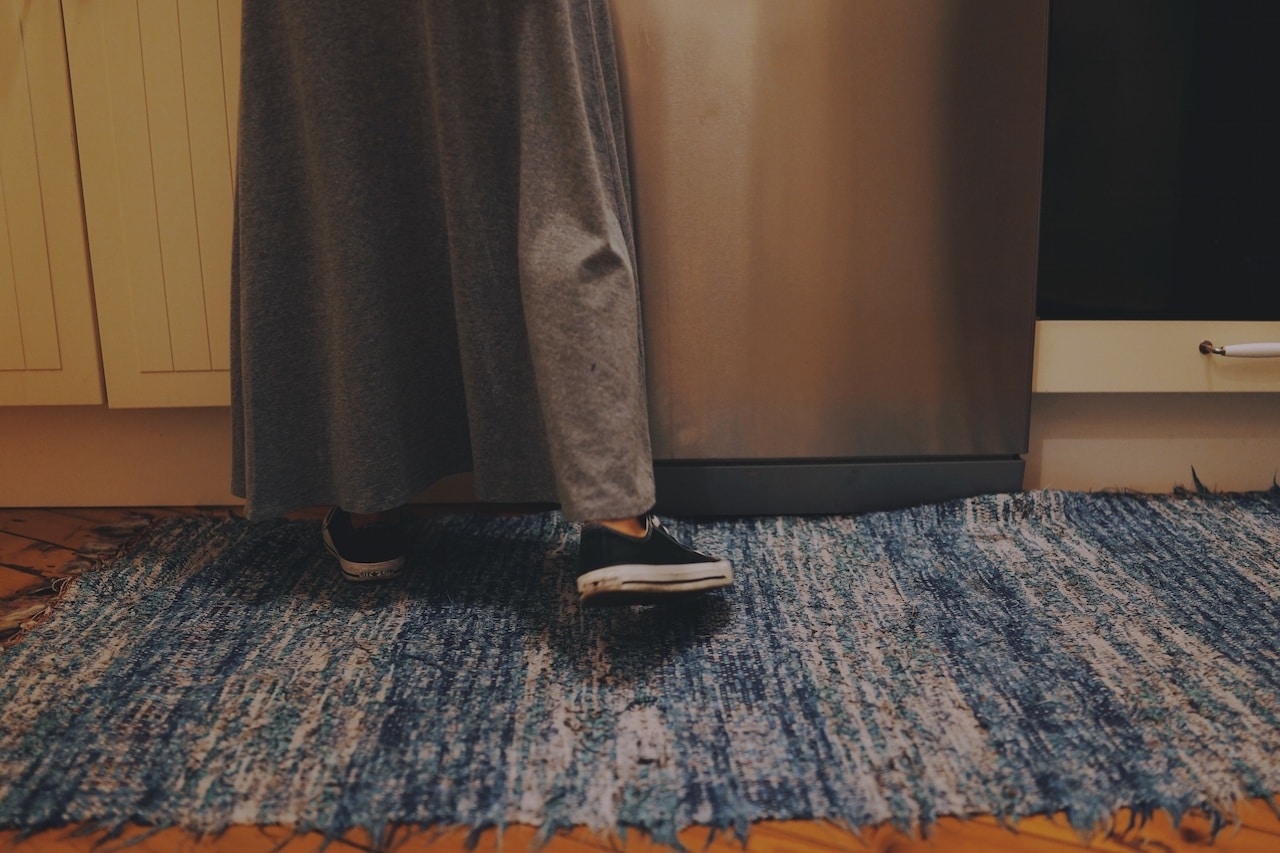Between kitchen carpets, kitchen carpeting, and rugs for hardwood floors in the kitchen (and not to mention round kitchen rugs), what is the best option for your kitchen? Let’s find out.
The Difference Between Carpets and Rugs
A lot of people use the words carpets and rugs interchangeably, but these are two very different things. For one carpet, they tend to cover much larger areas, and they can run from one room to another.
Rugs, on the other hand, are usually placed only in one area and cover a limited space. Rugs are often placed strategically in different areas of the house, such as under tables and near doorways. Both products can be placed in areas like the kitchen, but rugs do offer a specific advantage over carpets.
- Carpeting
Wall to wall carpeting is often done to complement the current scheme or theme of the house. Since it offers a solid color over a wide expanse of space, carpeting is an easy way to beautify the entire home.
Not only that, carpeting naturally adds a layer of insulation and cushioning, which preserves heat in the winter and reduces transmission of heat during the summer. If you have kids and elderly folk living at home, wall to wall carpeting might be more ideal – but only because of the cushioning it provides and non-slip properties.
On the other hand, newly installed carpeting may cause off-gassing that lasts for months, which may not be the most ideal setup for people who are suffering from any kind of allergies. People can also develop allergies over a period after being exposed to allergens emanating chemically from newly installed carpets.
Carpets also tend to develop heavy traffic patterning in areas where people hang out the most. After a year or so, maintenance becomes tedious for homeowners, and the wear and tear on carpeting will be uneven as people don’t always visit all the rooms in a home as frequently as spaces like the living room, kitchen, etc.
So if you were after the look and resale value afforded by carpeting, that might mean re-carpeting the entire house and spending a large bundle on maintenance every few months just to keep the carpeting’s appearance at an acceptable level.
- Rugs
Using rugs in general over carpeting gives the homeowner flexibility in terms of choosing which rugs go where. Since rugs can be large but not so large that they cover an entire room, you can strategize and select different rugs of different colors and sizes to decorate a room.
You can also create mini-spaces within living areas to personalize and stylize your house even more. Rugs are also easily washable, and they are easier to maintain than carpets. When an old rug is heavily worn by age and traffic, you can even chuck it out and buy a new one.
You can’t do this with wall to wall carpeting because carpeting is installed in one large swathe of space and it’s not an option to cut up worn sections so they can be replaced. That’s why we said that re-carpeting might be necessary after a few years if you want the carpeting to continue contributing to the resale value of the home.
Choosing a New Rug For Your Kitchen
Whether you are looking for a large enough rug to go onto space between the islands, or a small rug for that cute space in front of the sink, there are several factors you have to take into account so you will obtain the perfect rugs for your kitchen.
- Measure the area – You need to measure the area that you want to cover, so you do not end up buying something too big, or too small. Mats placed in front of the kitchen sink usually measure 2’ x 3’, though this may change depending on how your kitchen was designed in the first place. Double sink setups need a wider rug, and if you want complementary rugs side by side, that would be up to your preferences.
- Material and make – If you want easy to clean rugs, go for flat-weave ones. These are the easiest to maintain, though they are usually thinner, too. If you want or need something thicker, go for rugs that have a higher pile but be ready to invest more time in cleaning and maintaining them.
We recommend using rugs that are categorized as “indoor and outdoor” type rugs as they are manufactured with fibers (usually a blend of polypropylene and cotton) that absorb water quickly. Sisal rugs and jute rugs work just as well, though they may be pricier at times. Be sure to read the manufacturer’s notes before using the rugs and before cleaning them, so you don’t inadvertently damage the fibers. - Make them non-slip – Admittedly, many rugs don’t have non-slip backings, so you must purchase these separately, so nobody gets hurt in any part of the house where there are rugs.
While friction in footwear can handle some rugs, the risk of making a misstep and ending up the floor is high. Luckily, non-slip rubber mats or backing are inexpensive and can be purchased easily from hardware stores or wherever rugs and carpets are sold. - Aesthetics – Rugs aren’t just there to absorb dirt and spills; they’re there to complement your kitchen’s aesthetic values. You must take note of the current schemes you have at home and match the colors of your rugs to the current theme. That way, you can cheaply upgrade the looks of your spaces (not just the kitchen) by way of placing a few strategic rugs from the living room to the kitchen.
- Location – Place your rugs where there is a big chance of spills and other kitchen accidents. In the end, their job is to reduce damage to the flooring and keep things neat and tidy.

